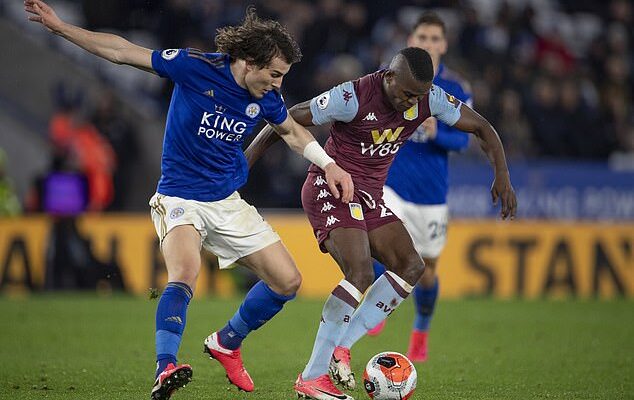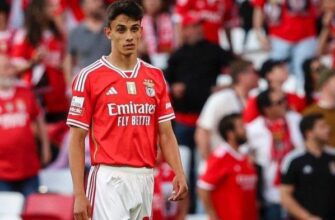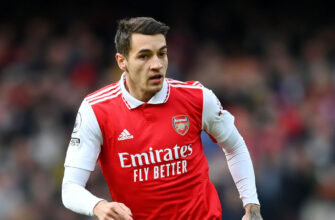With the Premier League curtain poised to rise, the transfer window transforms from a leisurely negotiation into a frantic dash. For many clubs, the next few days are not merely about adding depth; they are a critical juncture that could define their entire season. The stakes are undeniably high, with past windows offering cautionary tales of inaction leading to immediate on-pitch struggles. Here, we delve into the strategic predicaments of teams still navigating the intricate, often chaotic, world of player acquisition.
Newcastle United: The Ambition Paradox
For Newcastle United, a club seemingly backed by an endless well of ambition, this transfer window has presented a curious paradox. What began with optimistic pursuit of high-profile targets has, for many supporters, devolved into a period of frustrating near-misses and, more critically, the looming threat of losing their marquee forward, Alexander Isak. Reports linking him with a record-breaking move away, particularly to a rival, underscore a startling inefficiency in a window that promised so much.
The irony is palpable: a club with Champions League aspirations has acquired players like Anthony Elanga and Aaron Ramsdale, who, while capable, appear more suited to squad rotation than foundational upgrades. The glaring holes remain – a dynamic right-sided attacker, a commanding center-back to fortify the defense, and midfield and striker reinforcements beyond potential moves for Benjamin Sesko. With a challenging fixture list to kick off the season, Newcastle’s transfer committee faces immense pressure to pivot from missed opportunities to impactful, swift acquisitions. Time, unlike their financial resources, is a finite commodity.
Everton: The Financial Tightrope Walk
In stark contrast to Newcastle`s resource abundance, Everton`s transfer narrative is one of careful financial navigation. Following tumultuous periods involving ownership sagas and the escalating costs of their new stadium, the Toffees are operating with a pragmatism born of necessity. Manager David Moyes, known for his methodical approach, has overseen a busy, yet arguably insufficient, inflow of talent. Carlos Alcaraz, Mark Travers, Thierno Barry, and Adam Aznou represent sensible additions, bolstering key areas with both immediate utility and future potential.
However, the exodus of experienced players like Abdoulaye Doucoure, Ashley Young, and Dominic Calvert-Lewin—all without generating transfer fees—highlights the scale of the rebuilding challenge. Moyes` recent comments about “tickly bits” and the need for “nine or ten” new faces resonate deeply with a fanbase accustomed to battling at the wrong end of the table. While deals for Kiernan Dewsbury-Hall and Tyler Dibling signal progress, the urgency for an authoritative central midfielder and a creative spark remains paramount. Everton`s challenge isn`t merely about signing players; it`s about shrewdly maximizing every pound to secure Premier League survival and, perhaps, a more stable future.
Manchester United: The Perennial Puzzle
Manchester United’s transfer windows often resemble a complex jigsaw puzzle, where pieces are acquired at great expense, yet the final picture remains stubbornly incomplete. The significant outlay on talents like Matheus Cunha and Bryan Mbeumo, while addressing some offensive gaps, prompts questions about strategic allocation given the squad’s wider deficiencies. As captain Bruno Fernandes succinctly put it, the need for “more competition and more quality” is crystal clear.
The pursuit of a primary striker, potentially a battle with Newcastle for Sesko or a move for Ollie Watkins, underlines a familiar narrative of chasing a marquee No. 9. Yet, the broader picture reveals a side still yearning for foundational strength: a dominant central midfielder to partner Bruno, and a goalkeeper whose consistency can instill confidence rather than anxiety. With suggestions of strained purse strings, courtesy of figures like Jim Ratcliffe, United`s recruitment team faces the unenviable task of making every acquisition count. The club’s recent history suggests this is a challenge they have, at times, spectacularly failed to meet.
Brentford: The Evolution of a Model Club
Brentford has long been lauded as a paragon of shrewd football business, consistently turning player development and data-driven recruitment into on-field success, even in the face of significant departures. Their ascent from lower leagues to a Premier League mainstay, despite selling key figures like Ezri Konsa, Ivan Toney, and David Raya, speaks volumes about their operational model. This season, however, presents a nuanced test of that very philosophy.
While the departure of Bryan Mbeumo is softened by Kevin Schade’s existing presence, and the acquisition of Jordan Henderson provides veteran midfield ballast following Christian Norgaard`s exit, the simultaneous scale of key player turnover adds an element of unpredictability. The potential loss of Yoane Wissa, combined with Mbeumo’s exit, would strip the team of a significant portion of its attacking output. Brentford’s challenge is not one of panic, but of proving their finely-tuned system can seamlessly adapt to multiple significant player losses. It`s an evolution, not a revolution, but one that demands precise, timely interventions to avoid an unexpected dip.
Fulham: The Quest for Sustained Stability
Fulham’s pre-season form suggests a club in reasonable health, but a closer look at their transfer activity—or lack thereof, particularly in outfield positions—reveals a potential complacency. While the arrival of Benjamin Lecomte provides welcome competition in goal, and the potential return of Reiss Nelson offers a familiar attacking spark, relying predominantly on last season’s squad risks stagnation. The Premier League is a relentless arena, and standing still often equates to moving backward.
The aging forward line, with Raul Jimenez (34) and Rodrigo Muniz, lacks the prolific edge often necessary for upper mid-table security. Similarly, the midfield, while industrious, could benefit from a more authoritative presence to dictate play. Fulham’s situation isn`t one of crisis, but rather an opportunity. A few targeted, strategic additions – not major surgery, but intelligent upgrades – could elevate them from a comfortably surviving side to one that genuinely threatens established hierarchies. The question is whether the club’s hierarchy shares this proactive vision before the window slams shut.
The Final Countdown
As the clock ticks down, the remaining days of the transfer window promise a whirlwind of activity. For these clubs, and indeed for many others, the outcome of this frantic period will profoundly shape their fortunes. The delicate balance between strategic planning and last-minute opportunism will be tested. Will panic set in, leading to regrettable decisions? Or will astute late deals prove the difference between a season of struggle and one of surprising success? The Premier League, ever unpredictable, is poised to reveal its first answers.
(And yes, Chelsea, we noticed you haven`t signed anyone in the last two days. Perhaps a well-deserved break?)









